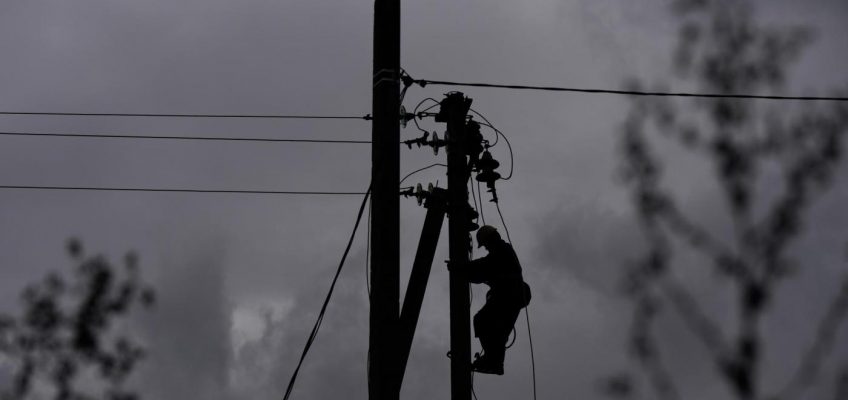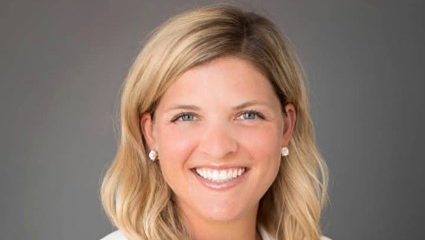The instructions to Jim Mauer from his father were clear: As an emergency fill-in on a veteran crew, the first-time high school football official should not throw his flag nor blow his whistle.
“So there’s an obvious holding penalty and I do both,” Mauer said recently, recalling a night during the 1990s. “Half the players stop, half keep going and a kid runs for a touchdown.”
The head referee called the play back and led Mauer to one sideline. He told the irate coach he would receive an honest explanation.
“My kid (screwed) up and blew his whistle when he shouldn’t have,” Ken Mauer, Sr. said that night while pointing at his youngest boy, Jim. “We’re going to replay the down, 10 yards from the spot of the foul.”
The rest of that squad’s members, comprised of three of Jim Mauer’s four older brothers, give him grief about the episode to this day. And they have plenty of chances during the fall, when the five siblings often comprise an entire crew of football zebras.
“It’s like getting together with your best friends,” said Jim, a 1993 St. Cloud State graduate and former Huskies quarterback, who didn’t let the faux pas in his debut deter him from joining the family’s longtime side hustle.
“We all have home and work commitments and things going on in our lives that take time away, but we’ve made football a priority. It’s a chance to forget about the realities of life.”
Tom Mauer speaks with Johnson quarterback Ali Farfan during the Governors’ 26-8 win over Central at St. Paul Central High School on Thursday, Sept. 11, 2025. (Tris Wykes / Special to the Pioneer Press)
Jim, Mark, Brian, Tom and Ken Mauer Jr., were standout athletes, though not quite to the extent of former Twins catcher Joe Mauer, their second cousin, once removed. The brothers were inspired to become officials by their father, a legendary, three-sport arbiter who also coached at St. Paul colleges and high schools.
Ken Mauer, Sr., who died in 2019, was the youngest of five brothers, all of whom played pro baseball. The 1945 Cretin High graduate starred in baseball and basketball at the University of St. Thomas. He also toiled in the Brooklyn Dodgers’ farm system and played pro basketball in Denver and St. Paul.
Mauer guided Macalester College to a conference baseball title during his lone year at the Scots’ helm and led Humboldt High to seven city championships, three Twin City crowns and three regional titles. He taught English in the St. Paul School District and coached football at Harding High, where his sons, all of them quarterbacks except for Brian, played for him.
The father of seven children with his wife, Thelma, Ken Sr. somehow found time to officiate football, basketball and baseball. He often worked with his brother, John.
“My father enjoyed it as much as coaching,” said Ken Jr., who took a junior college refereeing course more for the credits than as a career primer. The family’s eldest child, he began officiating junior high games for pocket money and enjoyed it enough to move on to high schools contests, sometimes with his namesake.
“I was a sponge,” said Ken Jr., who later played baseball for the Gophers. “It took the place of competing; now you’re competing against yourself.
“My father never schmoozed a coach, but there was a mutual respect. It wasn’t about how many state tournament games you were going to work. It was about doing the job well and never selling your (fellow officials) down the road.”
Ken Jr., 70, was an NBA official for 37 seasons and has refereed high school football for nearly 50 years. He’s the Mauer crew’s head referee while Brian, retired after teaching for 30 years at Minneapolis Roosevelt, is the umpire. Tom, who worked as a WNBA official for 22 years, is the back judge and Mark and Jim are the side judges.
There have been assorted combinations of Mauer brothers working on the same unit over the years, but they’re on a stretch of seven consecutive seasons as a crew.
“My parents raised us family first and we don’t have a lot of years left at this, so we’re making the most of it,” said Mark, who played football at the University of Nebraska from 1977-81 and later coached the sport at the collegiate level. “It brings you back to the game and you’re still an integral part of it.”
The Mauers almost always convene for a postgame meal to rehash a game’s events. It was a most unhappy discussion one night about 20 years ago after an Eden Prairie vs. Burnsville clash.
Burnsville led late and took an intentional safety, but its subsequent kickoff went out of bounds. The Mauers “sold it like we knew what we were doing,” said Jim, but they erroneously spotted the ball at the 40-yard line when it should have been five yards farther out.
An Eden Prairie receiver caught a pass as time expired, barely falling across the goal line for the winning points.
High school football official Ken Mauer works Minneapolis Washburn’s 49-0 victory over the Scots at Highland Park High School on Saturday, Oct. 4, 2025. (Tris Wykes / Pioneer Press)
“You never want the game to be dependent on an official’s call,” Jim said, recalling that Ken Jr., later visited Burnsville to discuss the game’s ending with its players and coaches.
Ken, Jr. was also a key note speaker at the Capital City Officials Association preseason meeting this year. Dan Pelletier, the association assigner’s and a longtime high school and college referee, said the message was for officials to work on controlling that which they can control.
Uniform appearance, rules knowledge, positional correctness and how to interact with players, coaches and fans are examples, said Pelletier, who worked with Ken Mauer, Sr., and has done so with all his sons during a 34-year career.
“You can train people from the jump, but there’s no duplicating experience,” Pelletier said, noting that officials now view online video of their games to assess tendencies and study unique plays and situations.
He noted the Mauers “communicate well and know what to expect from each other, and so they’re almost always on the same page.”
That includes verbal battles, but the siblings have each other’s striped backs.
“We’re five athletic and competitive brothers, so we argue all the time, but not necessarily on the football field,” said Tom Mauer, recently retired as assistant director of athletics at Concordia University in his hometown. “I think we take a little more pride in refereeing correctly than most.”
Ken Mauer Jr., said he’s unsure how much longer he’ll officiate football, but added he’ll likely accede to the wishes of his brothers.
“We’re in the twilight of our officiating years,” he said. “I think we’ll probably all give it up at the same time.”




